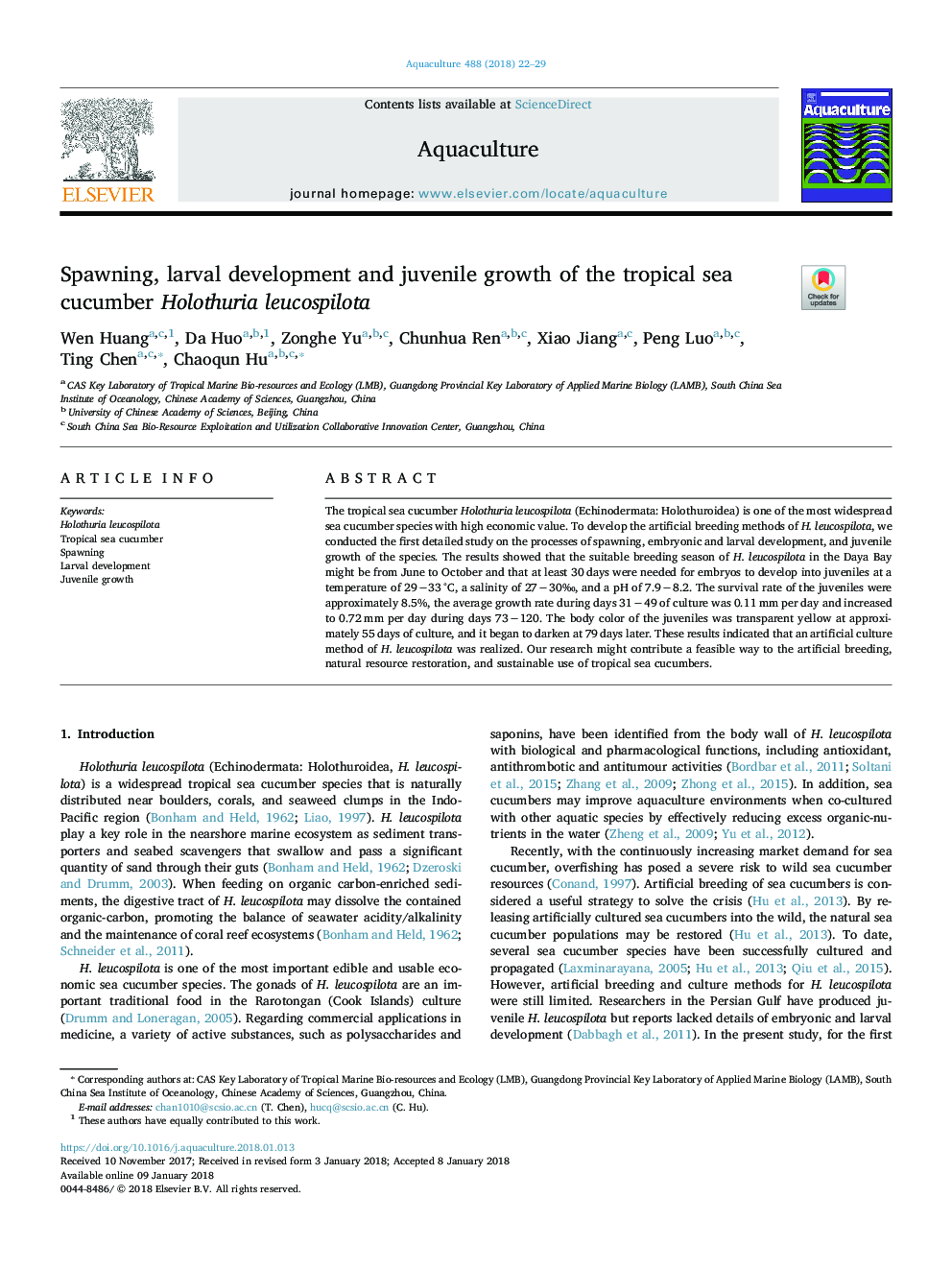| Article ID | Journal | Published Year | Pages | File Type |
|---|---|---|---|---|
| 8493404 | Aquaculture | 2018 | 8 Pages |
Abstract
The tropical sea cucumber Holothuria leucospilota (Echinodermata: Holothuroidea) is one of the most widespread sea cucumber species with high economic value. To develop the artificial breeding methods of H. leucospilota, we conducted the first detailed study on the processes of spawning, embryonic and larval development, and juvenile growth of the species. The results showed that the suitable breeding season of H. leucospilota in the Daya Bay might be from June to October and that at least 30â¯days were needed for embryos to develop into juveniles at a temperature of 29â33â¯Â°C, a salinity of 27â30â°, and a pH of 7.9â8.2. The survival rate of the juveniles were approximately 8.5%, the average growth rate during days 31â49 of culture was 0.11â¯mm per day and increased to 0.72â¯mm per day during days 73â120. The body color of the juveniles was transparent yellow at approximately 55â¯days of culture, and it began to darken at 79â¯days later. These results indicated that an artificial culture method of H. leucospilota was realized. Our research might contribute a feasible way to the artificial breeding, natural resource restoration, and sustainable use of tropical sea cucumbers.
Related Topics
Life Sciences
Agricultural and Biological Sciences
Aquatic Science
Authors
Wen Huang, Da Huo, Zonghe Yu, Chunhua Ren, Xiao Jiang, Peng Luo, Ting Chen, Chaoqun Hu,
